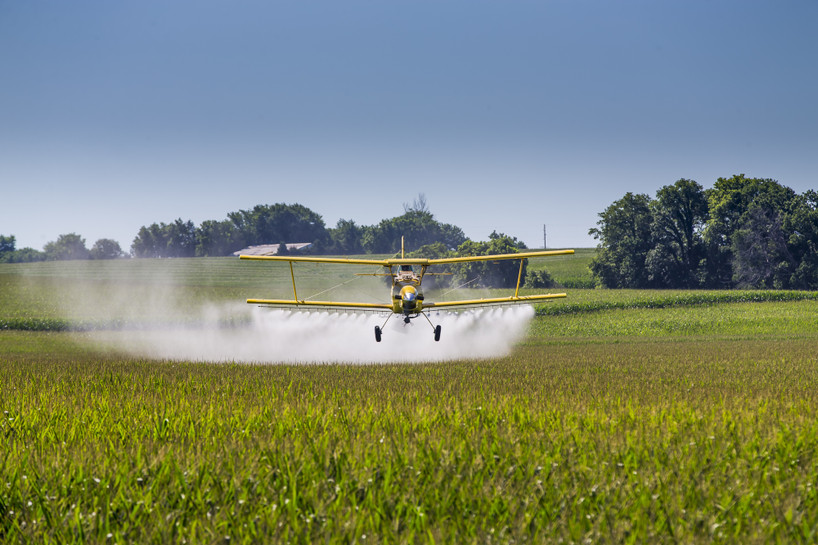5 Tips for Effective Crop Spraying
If you're applying pesticides, herbicides, or fungicides to your crops, the goals are pretty simple. Kill any pests and keep your property healthy.
Although the crop spraying industry has grown over the years, it still isn't easy to get things right. A mistake could be pretty damaging--pesticides drifting out of the range of your crops can contaminate public spaces, your neighbor's property, or wildlife areas.
There's never been a better time to look at the plumbing of your machine and your spraying strategy, whether you've been spraying for years or you're completely new to the game.
Here are 5 tips for more effective and safe spraying--so you can make this year your best season yet.
5 Tips for Effective Crop Spraying
With the right spraying technique, not only can you keep your crops safe, but you can save yourself a little money in the process. Effective spraying will help you maximize your use of pesticides.
Now is a great time to prep your sprayers and come up with an application strategy for the upcoming season. Here are some tips to help you do it.
1. Avoid Spray Drift
Spray drift can cause chemicals to stray beyond the confines of your field. This could lead to more serious issues down the line--like water contamination or pesticides leaking onto the property of those living around you.
Drift is more likely to happen at higher temperatures. Keep an eye on the heat and remember that mid-80 degrees or higher can increase chances of drift.
While wind speed is important, heat can create farther spray drift distances. For example, if it's 85 degrees and the wind is going at 10 miles per hour, the spray drift distance will be similar to 15 miles per hour wind at a lower temperature.
Another factor that can affect spray drift is your boom height. Staying one or two feet above the crop field will usually result in little drift. But at three feet and higher, the drift distance can rise significantly.
2. Pick the Right Nozzle
Droplet size matters--and picking the right nozzle is key to make sure that you're getting the coverage you need.
It can be a tricky balance to find. Smaller droplets are more likely to drift and larger droplets might not give you the coverage that you need. In addition, small droplets won't penetrate and cover the whole target as well as larger droplets.
Depending on your crop, you might need to adjust your nozzles to find the right droplet size for you. Remember that each sprayer nozzle will have a range of droplet sizes. Even if you're spraying medium droplets, about 20-30% of those droplets will either be fine or large.
Unless you have a crop that requires more surface area or penetration than normal, aim for a medium-sized droplet to give you the best balance. And be sure to change your nozzles as they age to keep the performance sharp and up to date. Shop our Greenleaf Spray Nozzles.
3. Adjust Droplet Pressure
A droplet that's 100 microns takes about 11 seconds to fall 10 feet. The smaller the droplet gets, the longer it takes to hit your crops because of the air friction slowing it down. This delay means that your droplets are vulnerable to wind currents and drift.
But this doesn't mean that you should just apply more pressure. If you increase droplet speed, droplets will become even smaller. This just increases your chances of drift and slows the droplets even more.
If you need a smaller droplet size and you're worried about drift, try slowing down when you get close to your neighbor's property. Reduce the nozzle pressure as you slow down and the droplets will grow larger--and therefore will be less likely to drift.
4. Always Read the Label
Depending on the type of crop and the chemical that you're spraying, you might need a different strategy. For example, some plants need more coverage mid-plant or on the bottom instead of the top. This will require a different droplet size and pressure.
Take a look at the product label for your pesticide or fungicide. They may put right on the label what droplet size you should aim for, along with an ideal application rate. For example, it might say that droplet size should be 200-350 microns with an application rate of 10 gallons per acre.
Using the manufacturer's spraying techniques can help you find the right strategy for that particular product and crop.
5. Watch Your Speed
Watch your travel speed when you're spraying crops and try to keep it as consistent as possible. It might be tempting to pick up the pace to let you cover a field quicker, but this can make your spraying much less efficient.
For example, if you increase your speed by 15%, the application rate will also be cut by 15% and you won't be covering your entire crop. The reverse is also true--if you reduce speed by 15%, you might over apply your pesticide by 15%.
To maximize your efficiency and avoid wasting product, know the best travel speed for your sprayer. This will depend on the pressure and droplet size, and it might take some trial and error before you find the right speed for you.
The Bottom Line
It isn't easy to find the perfect spraying technique for your crops. You have to take an endless list of factors into consideration--including the type of pesticide, the rate of application, pressure, speed, and droplet size.
Keep these crop spraying tips in mind as you go into your next growing season--so you can develop the right strategy moving forward. With the right crop spraying techniques, you can maximize efficiency and keep the surrounding area safe from contamination.
Looking for more agriculture tips and tricks? Check out our blog for more information!
 US Dollars
US Dollars
 Canadian Dollar
Canadian Dollar
 Australian Dollar
Australian Dollar
 Euro
Euro

